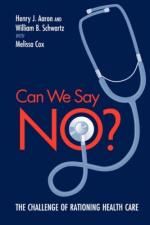|
This section contains 345 words (approx. 2 pages at 300 words per page) |
Sugar was the first table food rationed during World War II; sugar rationing began in the spring of 1942. Sugar shortages had occurred in World War I (1914–18). Remembering this, Americans rushed to stockpile sugar when the United States entered World War II in December 1941. So many shoppers were purchasing hundred-pound bags that stores soon set a limit of ten pounds for each purchaser. The U.S. government issued War Ration Book One in early May 1942 to ration sugar and coffee. This first book contained coupons to present at each purchase. The sugar ration was eight ounces for each person per week. The amount was later increased to twelve ounces. Office of Price Administration (OPA) inspectors enforced the rationing restrictions as best they could. Later in 1942, the sugar shortage worsened when sugar shipments from the Philippines and Latin America declined. Sugar would be rationed throughout the war—and even afterward through 1946—before the supply was once again sufficient to meet the demand.
The sugar shortage meant putting less sugar in drinks and foods and finding substitutes such as saccharin and corn syrup. Honey was another popular sugar substitute; beehives were reportedly stolen in California for their honey. Coconut kisses sweetened with honey and molasses replaced chocolate kisses. Restaurants put less sugar in their sugar bowls and asked customers to limit their use. People bought more goods from bakeries to avoid depleting their own sugar supplies at home.
The rationing of coffee started in November 1942. The threat of looming coffee shortages and rationing led to much hoarding, which only caused shortages to occur sooner than expected. To combat hoarding, the government froze all sales of coffee in late October 1942. Citizens were allowed one pound of coffee per adult every five weeks. Coffee drinkers who wanted more than their rationed amount had to resort to the black market or rebrew their used coffee grounds. Many who were not coffee drinkers began drinking coffee to make use of their coupons; others gave coffee ration coupons as wedding presents. Rationing of coffee stopped in July 1943.
|
This section contains 345 words (approx. 2 pages at 300 words per page) |


